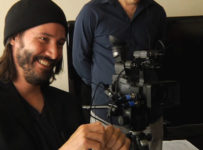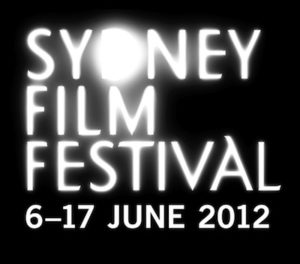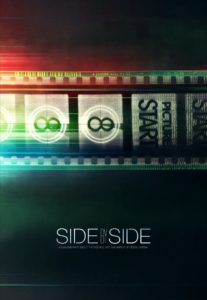An insightful and candid investigation into the film versus digital debate, one with no clear winners but a lots of strong opinions from industry heavyweights.
[stextbox id=”grey” caption=”Side By Side (2012)” float=”true” align=”right” width=”200″]
Director: Chris Kenneally
Writer(s): Chris Kenneally
Runtime: 99 minutes
Starring: Keanu Reeves, Lena Dunham, Greta Gerwig, Richard Linklater, George Lucas, David Lynch, Donald McAlpine, Christopher Nolan, Wally Pfister, Robert Rodriguez, Martin Scorsese, Steven Soderbergh, Lars Von Trier
Festival: Sydney Film Festival 2012
Distributor: TBA
Country: US
Rating (?): Highly Recommended (★★★★)
[/stextbox]
By the 1990s, the consumerisation and improved workflows associated with digital video heralded it as something of a democratic liberation for emerging filmmakers. While earlier debates on the format could easily be solved by its visible inferiority to film, developments in digital cinema have polarised the industry. The question is increasingly not one of whether filmmakers should convert to digital, but when they should. Spinning out of this is the broader idea of whether something should be done just because it can, and what impact does digitisation have for the longevity of the medium. Under the guidance of documentarian Chris Kenneally, actor and producer Keanu Reeves talks to some of the biggest names in film to find out what the current state of play is.
Side By Side demonstrates that the argument is at its height, and despite technical arguments for digital’s superiority, many of the players react on gut instinct. One of film’s biggest proponents in the film camp is blockbuster director Christopher Nolan, who together with regular cinematographer Wally Pfister, make a strong case for the “feel” of film and why they see it as the superior format. Big players George Lucas and James Cameron naturally declare film “dead”, with film no longer able to keep up with the vision of their productions.
By taking these arguments and placing them side by side, it’s evident that not everybody is excited by the switch to digital, even though it represents a new way of telling stories for people. David Lynch, in some of the more unintentionally hilarious moments in the film, tells Keanu not to quote him, but he’s probably through with film due to the immediacy of digital. For Robert Rodriguez, it’s about creating worlds he could never achieve on film, such as with Sin City. Lena Dunham, indie filmmaker and star of TV’s Girls, argues that she never would have attempted to make Tiny Furniture if she hadn’t had access to rough and ready technology like the Canon 5D consumer level cameras.
The strengths of the documentary lie in its impartiality (to a point), allowing an impressive ensemble of filmmakers to discuss their choices. Steven Soderbergh, actress Greta Gerwig, Richard Linklater, Andy and Lana Wachowski, Australian cinematographer Donald McAlpine, Vilmos Zsigmond and Lars Von Trier are just some of the names that Kenneally has assembled, and for the most part they are allowed to be frank and passionately honest about their thoughts on the digital revolution. Coupled with some hand info-graphics and set visits to explain how this will change the way films are made, Reeves’ access to this level of talent, and his own involvement in the interviews, makes for far more provocative discussions than one would expect.
Side By Side doesn’t come to any startling conclusions, but it offers up a series of arguments. While Steven Soderbergh suggests that he wants to call up film and tell it that he’s met someone else, Martin Scorsese, the person to refer to for all things, is more pragmatic: “The issue is it’s different. How is it different, and how do you use it to tell a story? It’s up to the filmmaker”.
Side By Side played at the Sydney Film Festival in June 2012.


